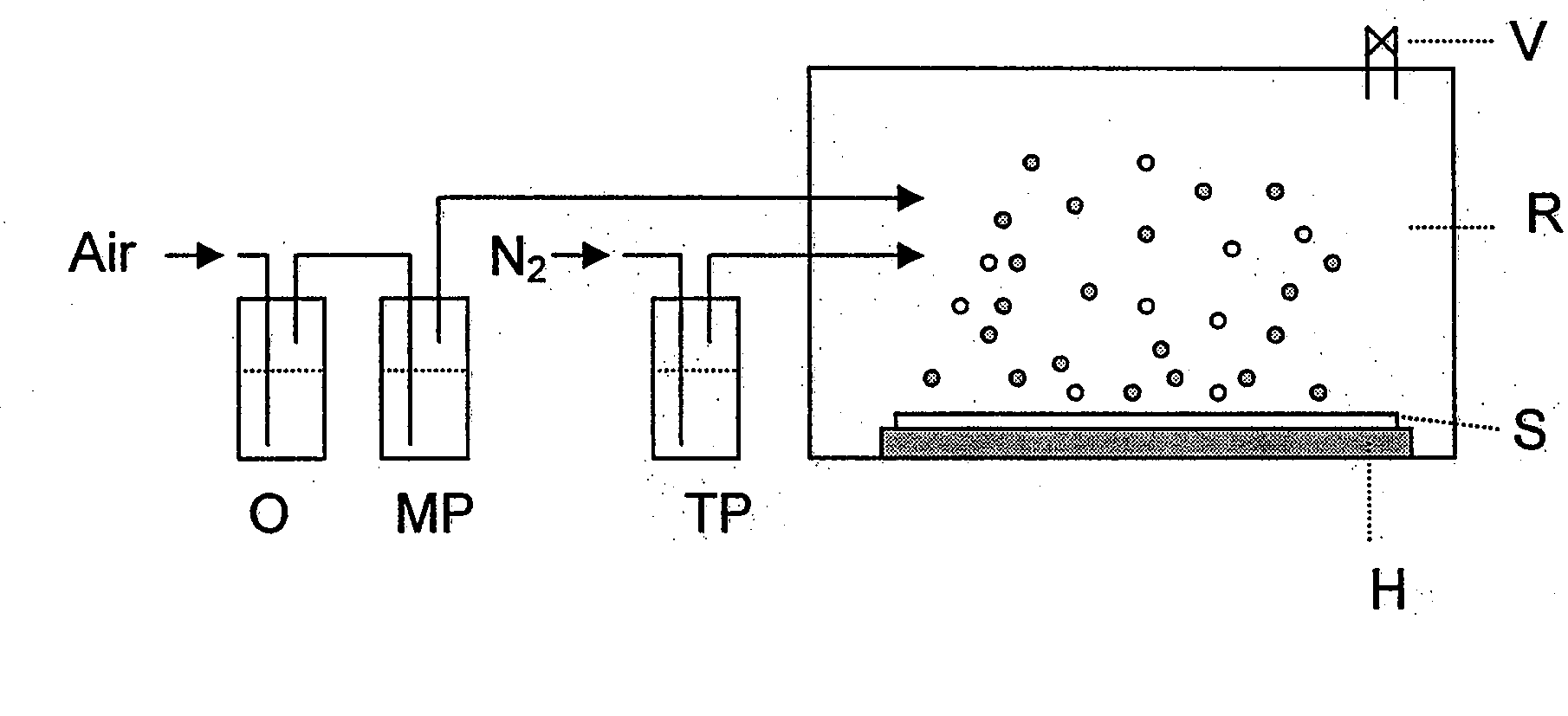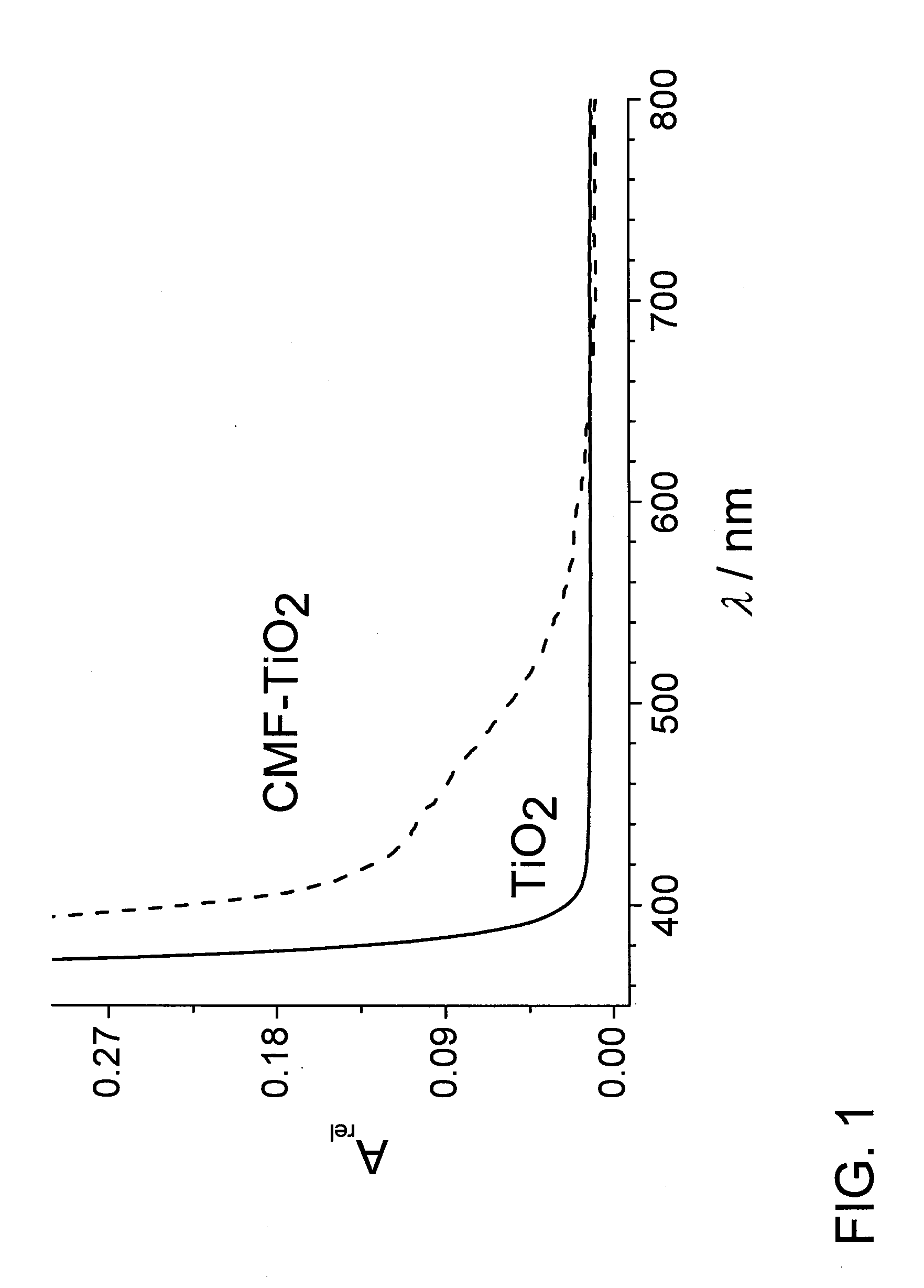Novel Carbon-Modified Photocatalyst Films and Method for Producing Same
a carbon-modified photocatalyst and carbon-modified technology, applied in catalyst activation/preparation, chemical vapor deposition coating, coating, etc., can solve the problems of requiring expensive and complicated apparatuses, unable to achieve catalytic activity in diffuse daylight, and unable to achieve the effect of increasing the hydrophilicity of the cmf-tio2 surfa
- Summary
- Abstract
- Description
- Claims
- Application Information
AI Technical Summary
Benefits of technology
Problems solved by technology
Method used
Image
Examples
example 1
Method I
[0032]A glass plate (substrate S) in the reactor chamber R (FIG. 7) is heated to 300° C. and maintained at this temperature. Water, toluene and titanium tetraisopropylate are subsequently filled into washing bottles O, MP and TP, respectively. Air is introduced through O and MP at a rate of 0.1 to 1.0 ml / min, nitrogen being introduced through TP at a rate of 1 to 10 ml / min. Depending on the nature of the glass surface, different reaction times are necessary to obtain an optimum film. This is achieved by corresponding variation of the introduction rate.
example 2
Method II
[0033]Same procedure as in Example 1, the difference being that a glass plate S coated with an unmodified titanium dioxide film is used as the substrate.
example 3
[0034]Same procedure as in Example 1, the difference being that a substrate S made of a metal or a temperature-resistant non-metal is used instead of a glass plate.
PUM
| Property | Measurement | Unit |
|---|---|---|
| boiling points | aaaaa | aaaaa |
| boiling points | aaaaa | aaaaa |
| boiling point | aaaaa | aaaaa |
Abstract
Description
Claims
Application Information
 Login to View More
Login to View More - R&D
- Intellectual Property
- Life Sciences
- Materials
- Tech Scout
- Unparalleled Data Quality
- Higher Quality Content
- 60% Fewer Hallucinations
Browse by: Latest US Patents, China's latest patents, Technical Efficacy Thesaurus, Application Domain, Technology Topic, Popular Technical Reports.
© 2025 PatSnap. All rights reserved.Legal|Privacy policy|Modern Slavery Act Transparency Statement|Sitemap|About US| Contact US: help@patsnap.com



